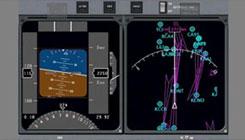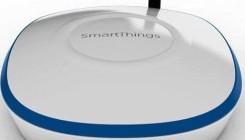Laminar Research claims its X-Plane 9 flight simulator app is the "most flexible and realistic on the market. After loading it onto my Asus Transformer Prime, I have to say I'm very impressed with its level of sophistication and straightforward operation. And it made me think there may be some good opportunities in this niche. My frame of reference is Flight Gear, the popular open source flight simulator for Linux. Flight Gear offers realistic aerodynamics and great scenery. I've been using it for a couple of years and prefer flying the Fairchild Republic A-10 Thunderbolt out of San Francisco International. I run Flight Gear on my duo-core Asus notebook with an old Sidewinder Precision II joystick. Naturally, X-Plane 9 uses on-board accelerometers and touch screen controls instead of a keyboard and joystick. The default plane is a Cirrus-SJ-50. Several other turbofan and piston-engined planes are available as well. Without any purchases of planes or scenery, you can fly around Innsbruck (Austria), Hawaii, Southern California and the San Francisco Bay area.
Checklist
After starting the program, you'll find the throttle and flaps sliders on the left and right, respectively. The rudder is a slider across the bottom of the screen. Banking is accomplished by tilting left or right. Tilting the tablet back raises the nose, tilting it down lowers it. Brake and landing gear buttons are placed the lower center of the screen. The Heads Up Display is pretty much a standard view with the artificial horizon in the middle, airspeed on the left and altitude on the right. Tap near the top of the screen and you'll light up buttons to change views, switch to instruments only, pause the flight or change flight parameters (in other words, you'll display the setup screen). Setup lets you select your airport, plane, weights, fail characteristics, time, sky, weather, starting in-flight settings, and if you want to fly with other pilots on your local network. Pausing the program lets you replay the flight, both forwards and backwards. The program is quite comprehensive.
In Flight
Flying is very much the same as it is in Flight Gear. Landings are just as difficult and I still frequently crash. Once aloft stalls are realistic, barrel-rolls are pretty easy and everything happens in real time. Have you ever tried flying a flight simulator, on a tablet, while riding in a van? You certainly didn't have that capability a couple of years ago but you do with X-Plane 9. (No, I wasn't driving at the time.) It was definitely tough, because the accelerometers are very sensitive to movement. Every time we turned a corner or went over a bump, the plane turned or lurched unexpectedly. It was interesting but hard to control, even in plain old level flight. Landing was completely out of the question. It goes to show how responsive, tablets, and mobile simulators, have become.
Opportunities
So here's what I'm thinking: Just consider the tablet hardware coming out in the next year or two. What does advanced hardware in a mobile device mean to hotshot developers? Perhaps there are other simulations that need to be explored. Or how about a mobile simulator wired to a quad-copter over a WiFi or Xbee link? How cool would that be? You'd have your own little highly portable, personal UAV system. The future looks bright for simulators on tablets. As hardware gets more capable, developers have an opportunity to create some really interesting applications. Put X-Plane 9 on your tablet and let your mobile developer imagination take flight.



